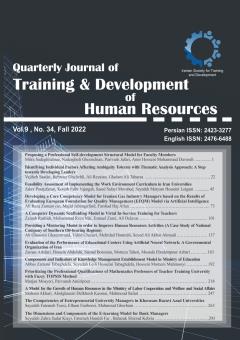Designing a core competency model for Iranian gas industry managers based on the results of EFQM by artificial intelligence method
Subject Areas :
Ali reza Zamanian
1
,
Majid Jahangirfard
2
*
![]() ,
Farshad Haj alian
3
,
Farshad Haj alian
3
1 -
2 - Azad University Firoozkooh
3 - faculty member
Keywords: Managerial competency model, Core competency, Clustering, Artificial intelligence, EFQM,
Abstract :
The success of organizations in achieving strategic goals is highly dependent on how the managers of that organization perform, and this success is more directly related to the selection and appointment of competent and knowledgeable managers at the top of the organizational pyramid. Competency-based management is a strong approach to developing and maintaining the organization's human capital in the long run, and competency models are a useful tool for identifying and developing the knowledge, skills and abilities needed by managers. In general, competency is a set of knowledge, skills, attitudes, abilities, interests and personality traits that enable employees to perform job-related activities effectively and perform job performance as expected or beyond expectations. Do." In accordance with the competencies defined in the evaluation center of the managers of the National Iranian Gas Company and according to the nature of trainable competencies, three categories of communication competencies, managerial and leadership competencies, cognitive and one category of untrained personality competencies have been defined. In this article, we have tried to achieve a set of core competencies in the field of competencies of gas industry managers, which has been achieved based on the performance of managers in organizational excellence. These core competencies are the beacon of the organization in achieving strategic goals and can be purposefully effective in the shortest time and with the least cost in the development process of the managers of the organization.

